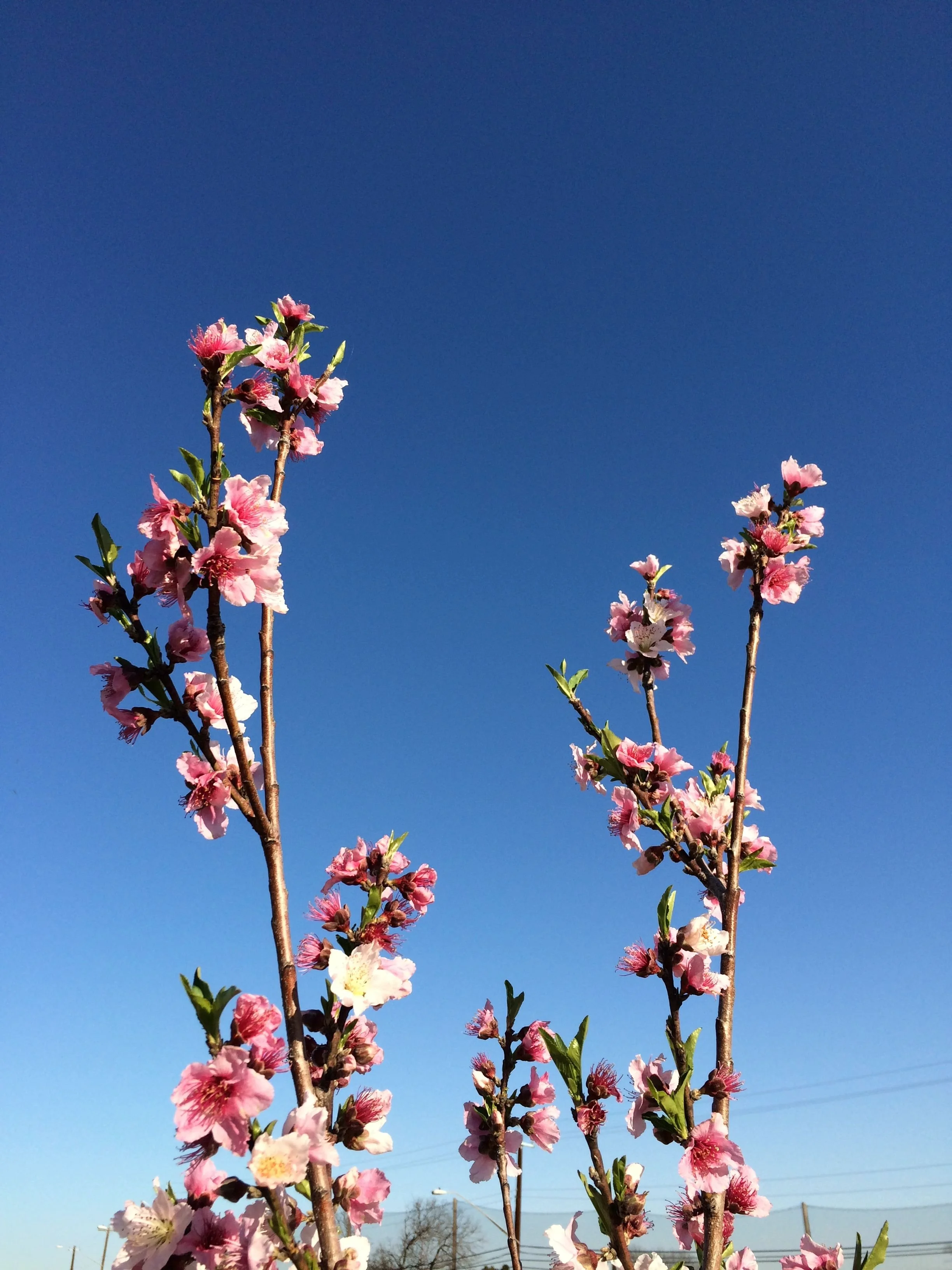I get to design orchards for my customers now and then, and it is delightful. Inevitably these orchards include peaches, because everyone likes them and they grow well around here. One of the problems I have when I design an orchard is keeping track of the chill hours required for each variety of peach. So I made a list here for future reference.
What are chill hours? Any fruit that has a core or a pit e.g. apples, pears, plums, cherries, require a certain number of chill hours before they will bloom in the spring. This is one of several factors that the trees use to determine if it is springtime and if it is safe for them to start growing flowers and new leaves. Each variety of tree requires a certain number of hours of cold temps (seems like experts can’t agree how cold, whenever I read about chill hours the sources differ). So here in Austin, TX we get about 550 chill hours every winter. But places further north, like Denton, TX, for example, get about 800.
So what? Here are the implications. If you plant a tree that needs a LOT of chill hours in a place where the winter provides a low number of chill hours, then that tree will never know when spring arrives and might never wake up from winter dormancy. This happened a few years ago when I was caring for the urban orchard in the Mueller neighborhood (located at Manor and Berkman Drive). The higher chill hour varieties of peaches growing in that orchard didn’t start growing until June because we had a very warm winter. When they started growing the growth was very slow, each tree only had a few leaves and they didn't start growing new twigs until much later in the summer. On the other hand if you have a tree with low chill hour requirements growing in place where the winter provides more chill hours, the trees will start blooming and growing new leaves before winter is over. When another freeze happens it will damage or kill the flowers and you won’t get any fruit that year. This is happening this year in Austin with ‘Ana’ and ‘Ein Shemer’ apples and ‘La Feliciana’ peaches because they require low chill hours and we had a lot of very cold weather early in the winter, so they are blooming now (Mid-January). It is very likely that we will have another hard freeze that will kill those flowers and tender new leaves.
So what should home orchardists do? I recommend getting lower chill hour varieties because at least if you loose the flowers every few years the tree will at least break dormancy and be able to grow. You can accept that certain years you will not get fruit. I also recommend planting many different varieties requiring a range of chill hours if you have space, that way you can increase your odds of getting some fruit each year. You can also graft multiple varieties onto one tree. Also remember that if you live in an urban area the air will be warmer than rural areas, so lower chill hour varieties might work for you. For Austin I choose varieties with about 500-650 chill hours. For rural areas around Austin I try to go more for 600 hours. Sometimes it can be hard to find the varieties you are looking for in stores as they sell out really fast, so do the best you can.
Here’s a more academic explanation of chilling hours and a map of chilling hours by county in Texas.
Here’s a map of chill hours for the whole USA
Here’s my chill hour list for peach varieties. I got this info from Legg Creek Nursery and Womack Nursery. I will add more as I discover them. Happy Gardening!
Big Red 700
Bounty 800
Dixieland 750
Flavorich 700
Harvester 750
Indian Cling 750
Junegold 600
Loring 750
Redskin 750
Regal 700
Texroyal 600
Belle of Georgia 700-800
Sam Houston 500 (not cold hardy in severe winters in Austin- got severe cracking on north side of the trunks in Feb 2021 storm, had to remove some of these trees after the cracks got infected and couldn’t seal over)
Florida King 450
Earligrande 275
Tex King 400
Tropic Snow 200
Elberta 850
Tex Star 450
La Feliciana 550
Monroe 850
Ranger 900 (extra cold hardy)
Red Globe 850
Red Haven 950
Early Amber 250
Red Indian 850
Rio Grande 450

